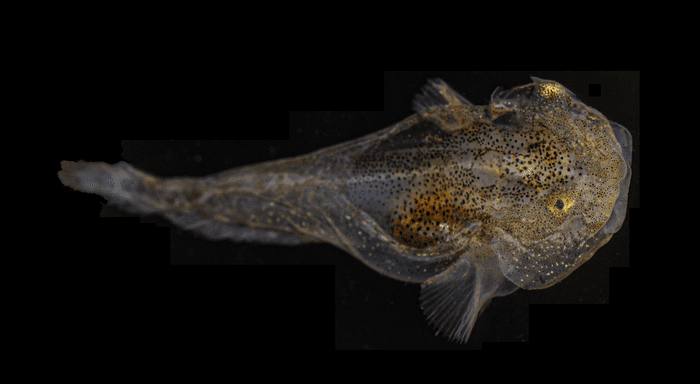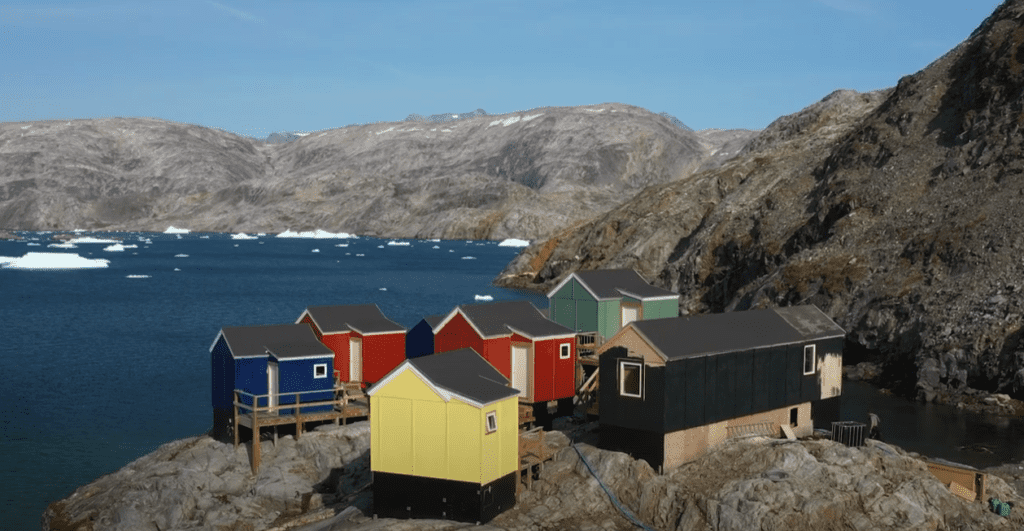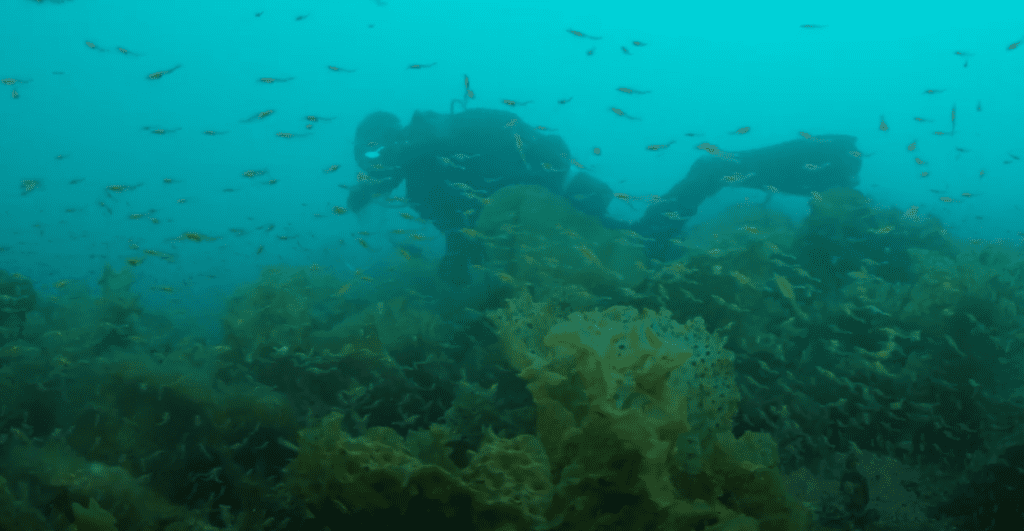Life, as they say, finds a way. To find a way to survive in Greenland’s cold waters, animals resort to all sorts of tactics. Some develop antifreeze proteins, and this has been described before. But according to a new study, some snailfish are chock full of antifreeze proteins, the highest levels ever observed.

In 2020, John Sparks and David Gruber, two biologists associated with the American Museum of Natural History were on an expedition in Greenland, looking at the prevalence of biofluorescence in the Arctic. At a makeshift lab with fresh water directly from the glacier, the two set out to explore Greenland’s frigid ecosystem.
Far from a desolate landscape, the two biologists-turned-explorers found an ecosystem teeming with life below the waves.
“There’s so much kelp! Kelp with enormous fronds, and there’d be little fish swimming, or lots of shrimp swimming across the kelp, it was very beautiful underwater,” Sparks recalls in a video on the expedition.
Diving in from a remote cove, they thoroughly explored the ecosystem.
“We did dives in several different habitats, we looked in fjords, we looked in the kelp forests, and in several dives, we actually looked for specimens in the ice, among the icebergs,” Gruber adds.

What’s interesting about these icebergs is that they’re a sort of refuge for lots of little creatures. Crustaceans dart in and out of the ice, and even some fish make their way to these icebergs. But the problem, as the two biologists would learn on their own, is that the cold isn’t easy to manage. Because the ocean water contains salt, it can go below zero degrees Celsius (or 32 F) without freezing — so you have to bear freezing temperatures somehow. When they completed their initial bioluminescence research, they returned to the problem of cold.
Some animals refer to a familiar substance to help them with the cold — not one that we know from biology, but rather something we know from cars: antifreeze.
“Similar to how antifreeze in your car keeps the water in your radiator from freezing in cold temperatures, some animals have evolved amazing machinery that prevent them from freezing, such as antifreeze proteins, which prevent ice crystals from forming,” said David Gruber, a research associate at the Museum and a distinguished biology professor at CUNY’s Baruch College. “We already knew that this tiny snailfish, which lives in extremely cold waters, produced antifreeze proteins, but we didn’t realize just how chock-full of those proteins it is—and the amount of effort it was putting into making these proteins.”

Some species (notably some reptiles and insects) can survive if their body fluids partially freeze, but the same can’t be said for fishes. Fishes need to make sure their body fluids stay liquid, so they depend on antifreeze proteins. They make these proteins in the liver, and just like car antifreeze, the proteins work by lowering the freezing temperature of the liquid.
The ability of some fishes to produce antifreeze was discovered some 50 years go, but when researchers analyzed the levels of antifreeze in snailfish samples obtained in this expedition, they were surprised: the snailfish genes have the highest expression levels of antifreeze proteins ever observed. This highlights just how important it is for these fish to adapt to the freezing temperatures around Greenland, and it also raises a red flag for their survival.
As temperatures continue to rise due to global heating, this adaptation will be less useful, and could in fact be a threat to their survival.
“Since the mid-20th century, temperatures have increased twice as fast in the Arctic as in mid-latitudes and some studies predict that if Arctic sea ice decline continues at this current rate, in the summer the Arctic Ocean will be mostly ice-free within the next three decades,” Sparks said. “Arctic seas do not support a high diversity of fish species, and our study hypothesizes that with increasingly warming oceanic temperatures, ice-dwelling specialists such as this snailfish may encounter increased competition by more temperate species that were previously unable to survive at these higher northern latitudes.”
The Arctic is warming much more rapidly than other regions. While temperatures on Earth have increased by an average of one degree since 1990, temperatures in the Arctic have increased by at least four times as much. If temperatures continue to rise, all this brilliantly adapted ecosystem may not be able to adapt.
The study was published in the journal Evolutionary Bioinformatics.



